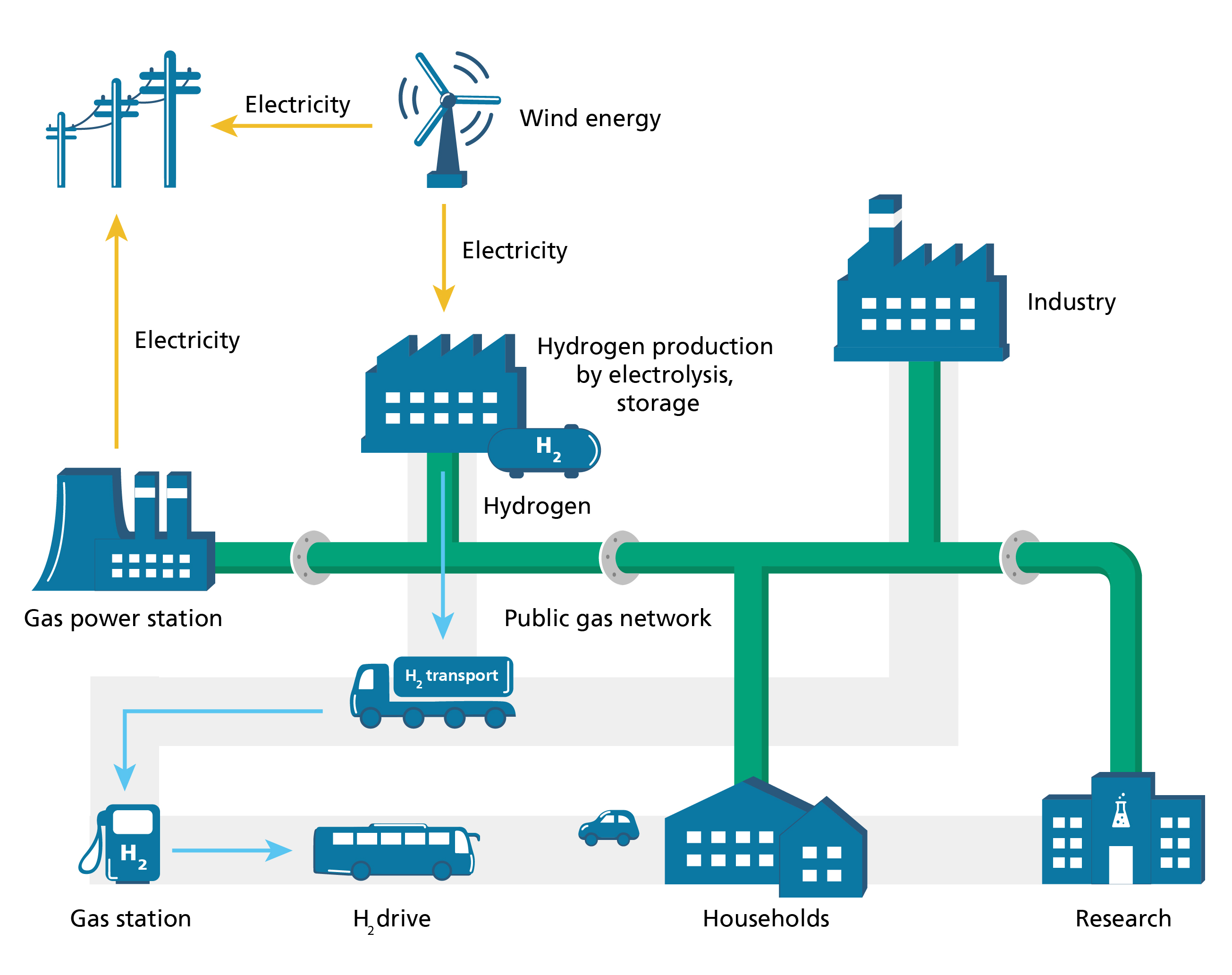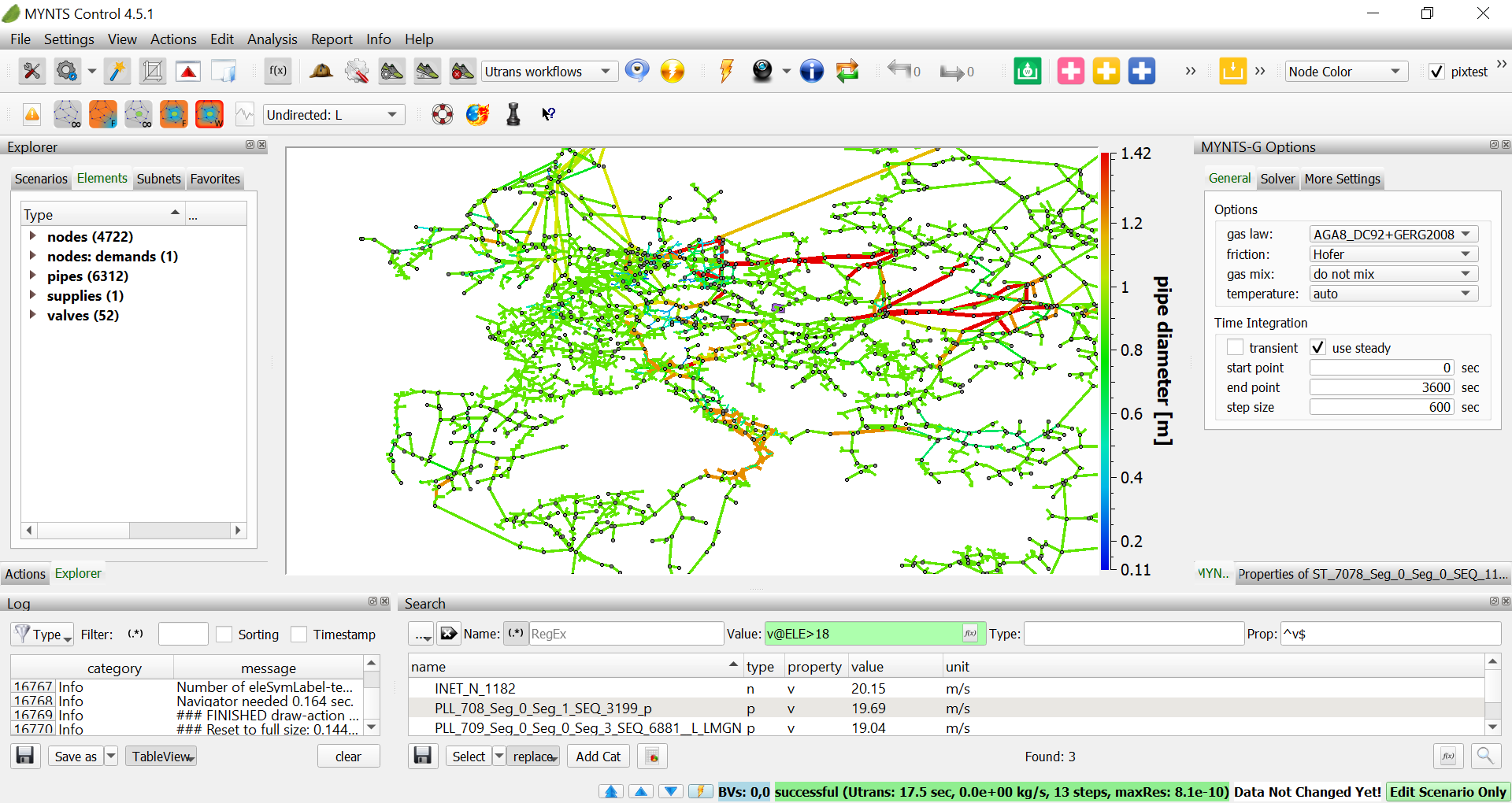TransHyDE-Sys − System Analysis of Transport Solutions for Green Hydrogen
One approach in the energy transition context is to also feed green hydrogen into the existing German network for gas transport. In order to be able to plan, control, and analyze such scenarios, existing simulation models must be expanded so that they can represent gas mixtures with high hydrogen content. In addition, the coupling to the relevant power grids must be advanced. These are the goals of the TransHyDE-Sys project.
Background: An essential element for the success of the energy transition is the so-called sector coupling. Sector coupling means linking the energy sectors of electricity, gas (including hydrogen), heating and cooling supply, and transport. Electricity-based energy carriers are suitable for this purpose because electricity can be used to produce energy carriers in the form of hydrogen and gaseous or liquid hydrocarbons - with certain conversion losses. Some of these energy carriers can be further utilized in existing infrastructures and consumption plants. Therefore, the question arises which possible transformation paths for electricity-based energy carriers are suitable and what their costs are. [1]
Tasks of SCAI: The mission of SCAI in TransHyDE-Sys is to model the future hydrogen network and its transformation paths. For this purpose, the institute develops and implements a detailed simulation model suitable for all transformation paths considered in the project concerning dynamics, control, and gas composition. Together with the project partners, scenarios for these transformation paths of the H2 transport network will be developed, analyzed, and simulated to prove the technical feasibility of this transformation and identify any problems to be expected. It is also taken into account that, in addition to feeding H2 into the existing gas pipeline network, entire parts of the network can be filled exclusively with hydrogen.
Results of these analyses will find their way into the following work steps: model comparison, sustainability assessment, and road mapping. The main objective in the technical/scientific area of the subproject is the extension of the gas grid model developed by SCAI, in particular:
- the development of network models for German gas networks with injected, variable or increasing amounts of hydrogen-dominant gases of different origins (electrolysis, biogases), taking into account European neighbor regions,
- the development of a network model for the European gas network,
- the development of transformation paths for the transition of natural gas-dominant network infrastructure to transport infrastructure for green hydrogen,
- the co-development of transformation pathways of gas compressor stations (from classical turbocompressors to compressor types designed explicitly for hydrogen)
- the implementation of storage models and interfaces to prototypical mechatronic component models, namely electrolysis plants, fuel cell power plants, hydrogen-capable compressor and controller models, and accompanying models (preheaters and coolers).
Existing models must be extended or replaced to be able to represent gas mixtures with a hydrogen content between 0 and 100% as well as proportions of other substances that are not prominent in natural gas. In addition, the coupling to relevant power grids must be advanced. The physical properties of hydrogen differ significantly from those of natural gas. These aspects must be taken into account in the modeling as well as in the calculation methods.
A technical goal of the project is also to make the gas grid simulator MYNTS, which is already suitable for industrial use, fully operational in the H2 range (0 to 100%) and here also for dynamic calculations.
The project TransHyDE-Sys is part of the BMBF flagship projects TransHyDE.
[1] Sven Kreidelmeyer, Hans Dambeck, Dr. Almut Kirchner, Marco Wünsch: Kosten und Transformationspfade für strombasierte Energieträger. Studie im Auftrag des Bundesministeriums für Wirtschaft und Energie. Endbericht zum Projekt „Transformationspfade und regulatorischer Rahmen für synthetische Brennstoffe “, May 2020. Endbericht
Project duration: 04/2021 – 03/2025


